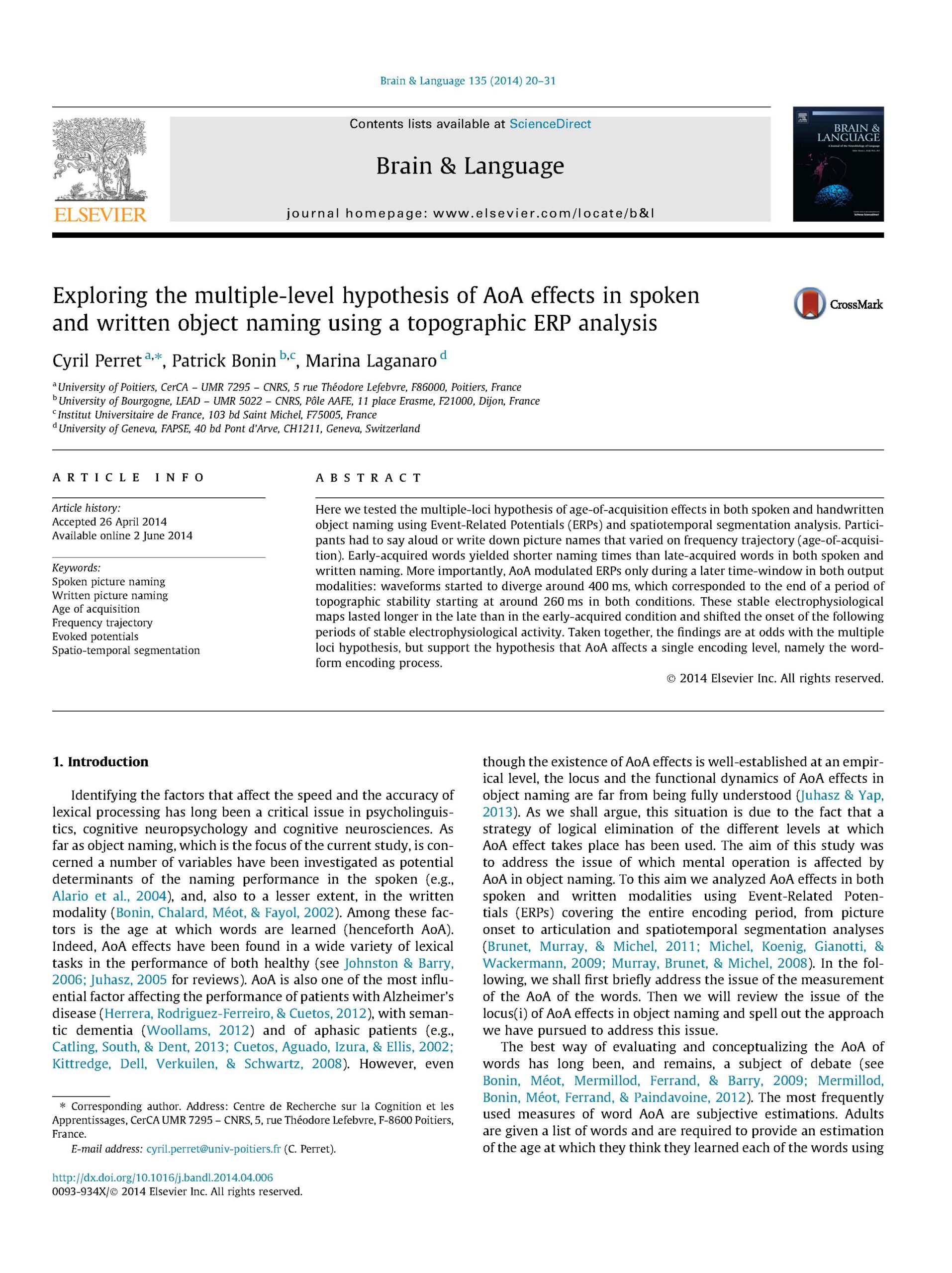Here we tested the multiple-loci hypothesis of age-of-acquisition effects in both spoken and handwritten object naming using Event-Related Potentials (ERPs) and spatiotemporal segmentation analysis. Participants had to say aloud or write down picture names that varied on frequency trajectory (age-of-acquisition). Early-acquired words yielded shorter naming times than late-acquired words in both spoken and written naming. More importantly, AoA modulated ERPs only during a later time-window in both output modalities: waveforms started to diverge around 400 ms, which corresponded to the end of a period of topographic stability starting at around 260 ms in both conditions. These stable electrophysiological maps lasted longer in the late than in the early-acquired condition and shifted the onset of the following periods of stable electrophysiological activity. Taken together, the findings are at odds with the multiple loci hypothesis, but support the hypothesis that AoA affects a single encoding level, namely the wordform encoding process.
Exploring the multiple-level hypothesis of AoA effects in spoken and written picture naming using a topograhic ERP analysis
